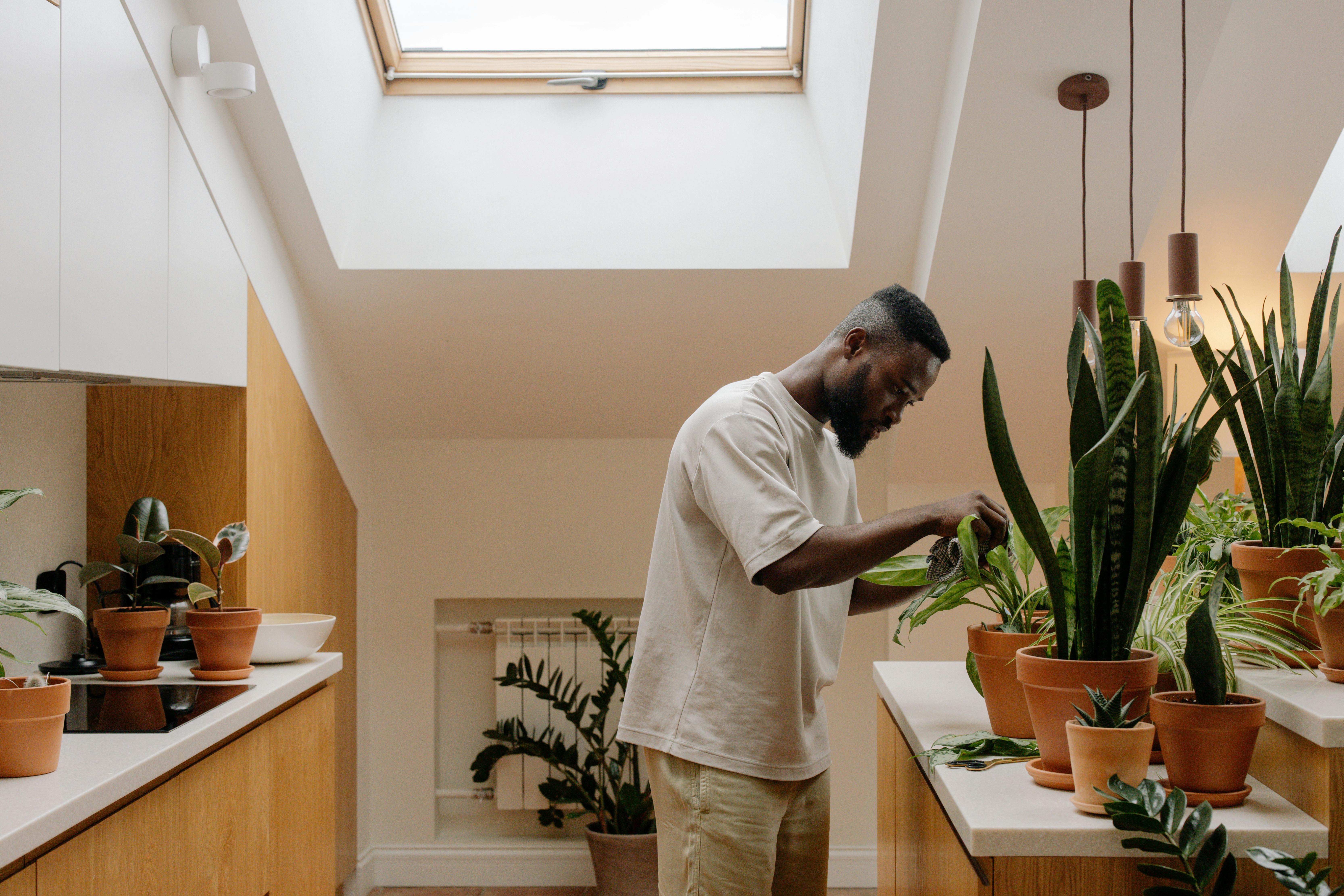Indoor Gardening: Bringing Your Green Thumb Indoors
Posted by Woodland Tools Co. on 4th Nov 2024
As winter settles in and outdoor gardening activities wind down, it's the perfect time to turn your attention to the world of indoor gardening. Whether you're a seasoned gardener looking to keep your hands in the soil year-round or a beginner seeking to add some greenery to your living space, indoor gardening offers a wealth of opportunities. In this guide, we'll explore the joys of indoor gardening, from choosing the right plants to mastering the tools and techniques that will help your indoor garden thrive.
Benefits of Indoor Gardening
- Year-round greenery and blooms
- Improved air quality in your home
- Fresh herbs and vegetables at your fingertips
- Stress reduction and improved mental health
- A creative outlet during the winter months
Essential Tools for Indoor Gardening
Before we dive into the specifics of indoor gardening, let's review the tools you'll need:
- Hand Pruners: For trimming and shaping plants
- Snips: For delicate pruning and harvesting herbs
- Trowel: For repotting and working with soil
- Cultivator: For loosening soil and mixing in amendments
- Transplanter: For moving seedlings or small plants
- Hori Hori Knife: A versatile tool for various indoor gardening tasks
- Watering Can: For precise watering of your indoor plants
- Spray Bottle: For misting and foliar feeding
- Plant Saucer: To catch excess water and protect surfaces
Choosing the Right Plants for Indoor Gardening
When selecting plants for your indoor garden, consider the following factors:
- Light Availability: Assess the natural light in your space and choose plants accordingly.
- Temperature and Humidity: Most homes are comfortable for a wide range of plants, but some may need special considerations.
- Space Constraints: Select plants that fit well in your available space.
- Maintenance Level: Choose plants that match your ability and willingness to care for them.
Popular Indoor Plants for Beginners
- Snake Plant (Sansevieria)
- Pothos (Epipremnum aureum)
- Spider Plant (Chlorophytum comosum)
- ZZ Plant (Zamioculcas zamiifolia)
- Philodendron
Indoor Herbs for Cooking
- Basil
- Chives
- Mint
- Parsley
- Rosemary
Setting Up Your Indoor Garden
1. Choosing the Right Location
Find spots in your home that receive adequate light. South-facing windows are ideal for most plants, but many can thrive in east or west-facing windows as well.
2. Selecting Containers
Choose pots with drainage holes to prevent waterlogging. Consider the size of the mature plant when selecting container size.
Tool Tip: Use your trowel or hori hori knife to add a layer of gravel at the bottom of pots for improved drainage.
3. Preparing the Soil
Use a high-quality potting mix designed for indoor plants. Avoid using garden soil, which can be too heavy and may contain pests or diseases.
Tool Tip: Use your cultivator to mix in organic matter or perlite to improve soil structure and drainage.
4. Planting
Carefully remove plants from their nursery containers and place them in their new pots. Use your transplanter for smaller plants or seedlings.
Tool Tip: Your hori hori knife can be useful for loosening root-bound plants before repotting.
Caring for Your Indoor Garden
1. Watering
Most indoor plants prefer to dry out slightly between waterings. Use your finger to check soil moisture before watering.
Tool Tip: A watering can with a long spout allows for precise watering, reducing the risk of wetting foliage.
2. Fertilizing
Use a balanced, water-soluble fertilizer designed for indoor plants. Feed your plants monthly during the growing season (spring and summer), reducing or stopping in winter.
Tool Tip: A spray bottle can be used for foliar feeding, which some plants benefit from.
3. Pruning and Grooming
Regularly remove dead or yellowing leaves and pinch back growing tips to encourage bushier growth.
Tool Tip: Use hand pruners for woody stems and snips for more delicate pruning tasks.
4. Pest Management
Inspect your plants regularly for signs of pests. If you spot any, isolate the affected plant and treat it promptly.
Tool Tip: A spray bottle filled with insecticidal soap can be an effective treatment for many common pests.
Advanced Indoor Gardening Techniques
1. Propagation
Many indoor plants can be easily propagated from cuttings. Use your snips to take a clean cut, then root the cutting in water or moist soil.
2. Terrariums
Create miniature ecosystems in glass containers. Your trowel and hori hori knife will be invaluable for planting and arranging these small gardens.
3. Hydroponics
For the tech-savvy gardener, hydroponic systems allow you to grow plants without soil, using nutrient-rich water instead.
4. Vertical Gardening
Maximize space by growing plants vertically using wall-mounted planters or tiered stands.
Seasonal Considerations for Indoor Gardening
Winter Care
- Be mindful of cold drafts from windows or doors.
- Use a humidifier or pebble tray to combat dry indoor air.
- Clean plant leaves to maximize light absorption.
Transitioning Plants Outdoors in Spring
- Gradually acclimate plants to outdoor conditions over 1-2 weeks.
- Use your trowel and cultivator to refresh the soil and check for any issues after the winter months.
Conclusion
Indoor gardening is a rewarding way to keep your green thumb active year-round. With the right tools, techniques, and a little patience, you can create a thriving indoor oasis that brings beauty, fresh air, and even fresh herbs to your home throughout the winter months and beyond.
Remember, each plant is unique, and part of the joy of indoor gardening is learning to understand and meet the needs of your green companions. Don't be afraid to experiment, and most importantly, enjoy the process of nurturing life indoors.
Happy indoor gardening!


